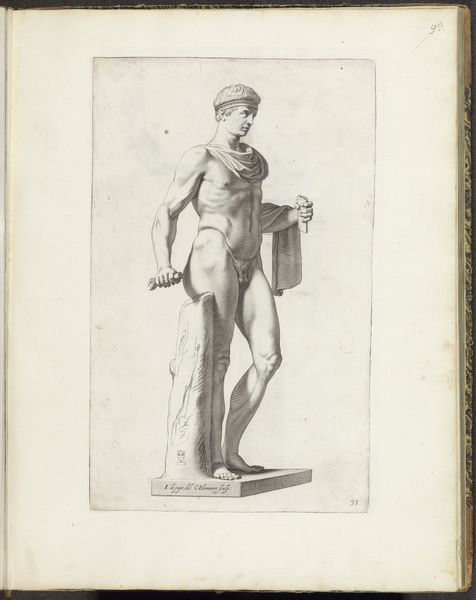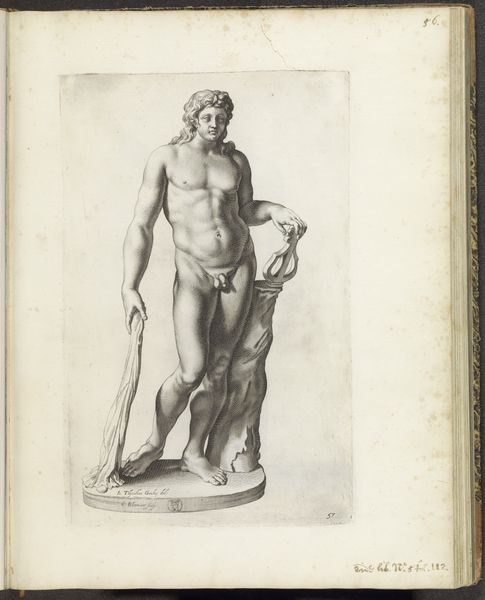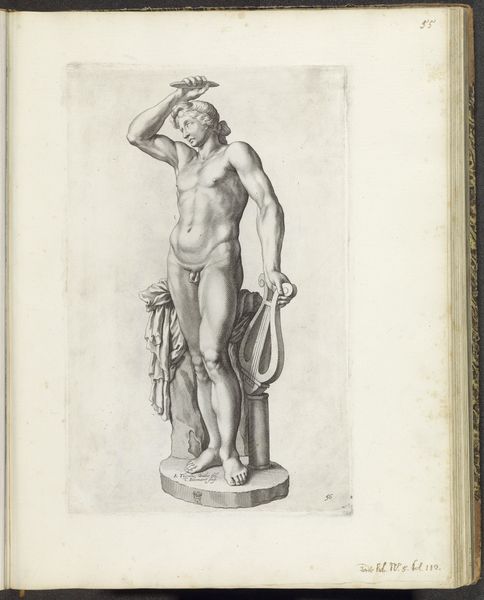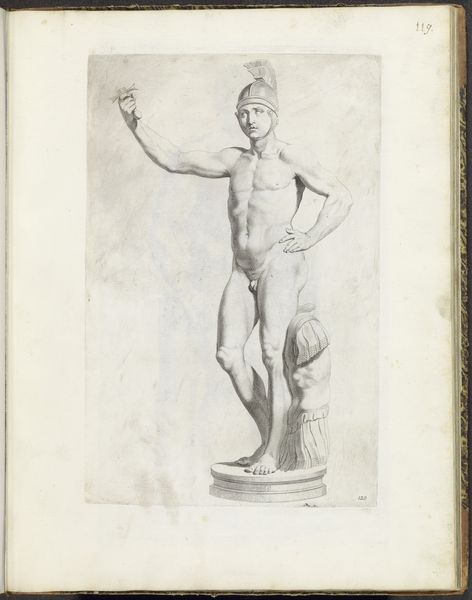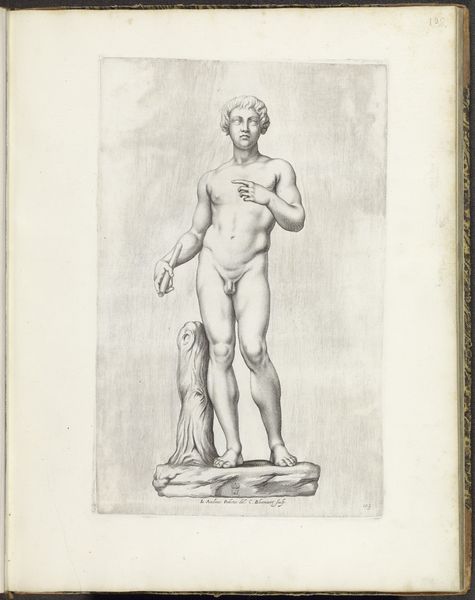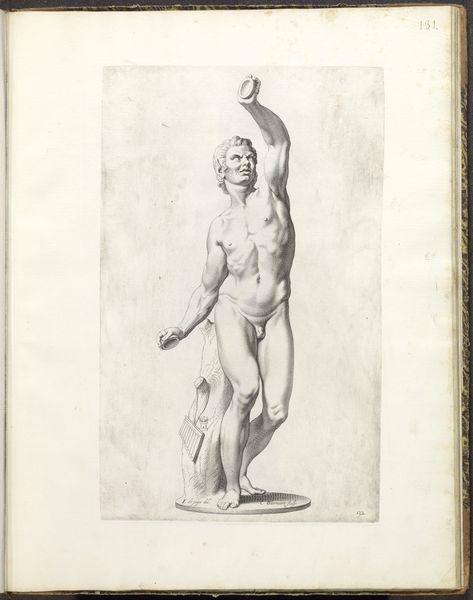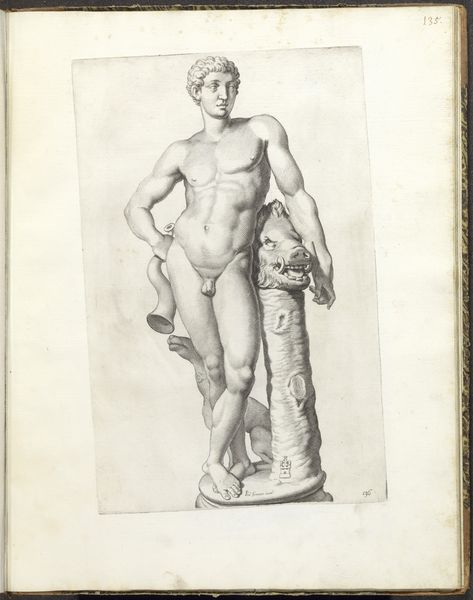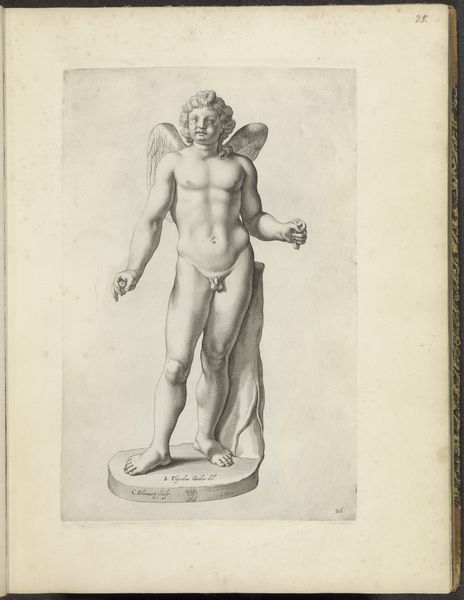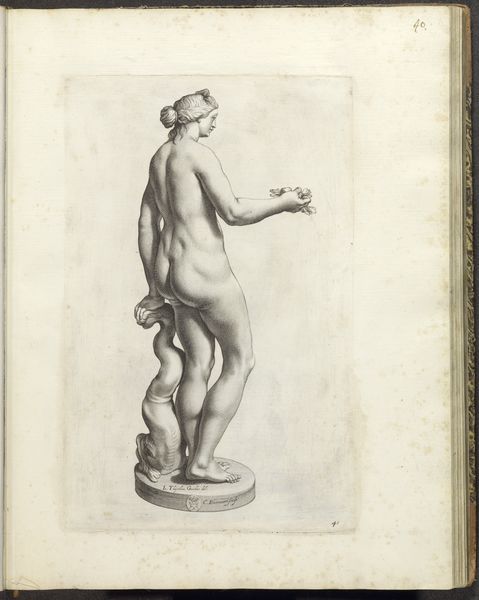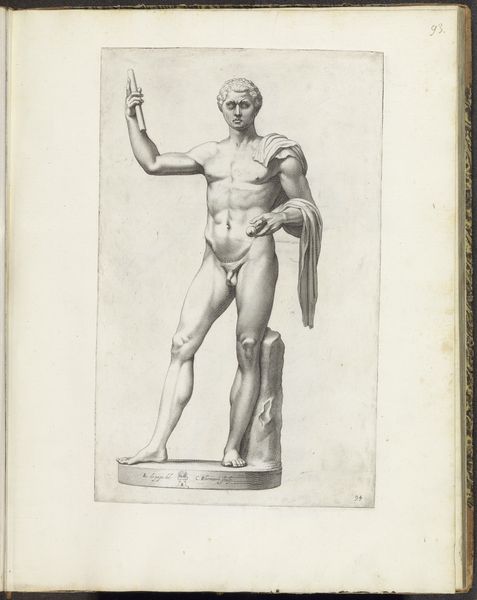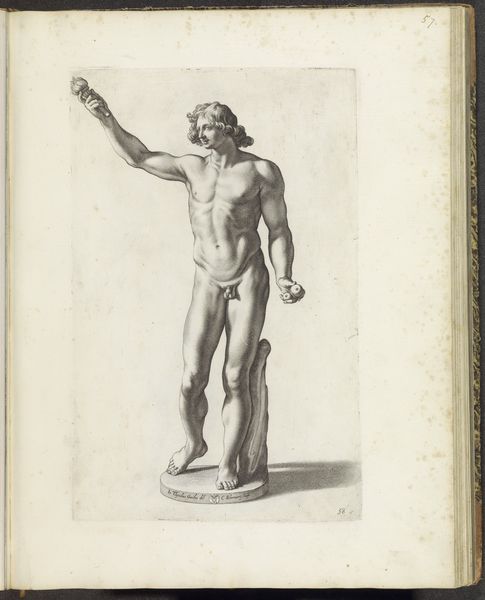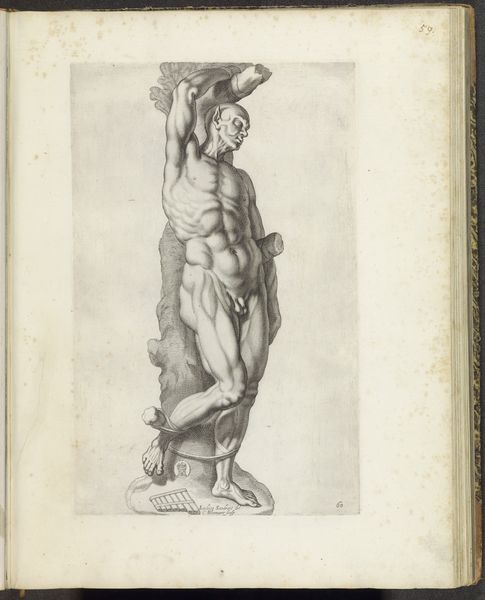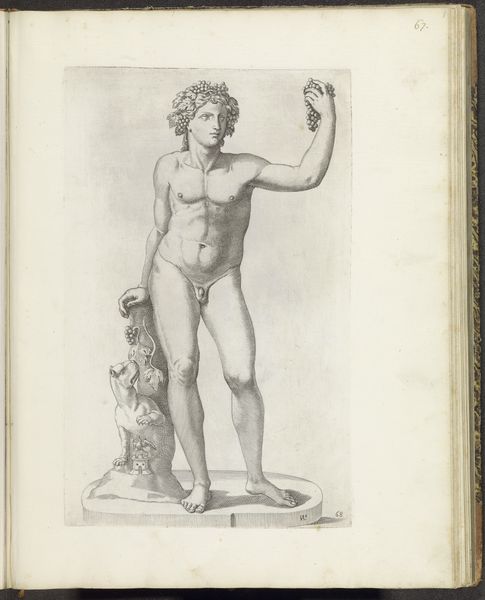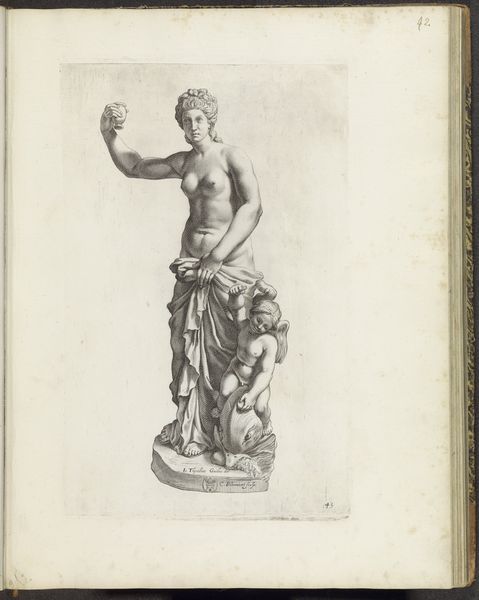
Standbeeld van een naakte gladiator met helm en schild 1636 - 1647
0:00
0:00
drawing, pencil, pen
#
drawing
#
baroque
#
pencil sketch
#
figuration
#
pen-ink sketch
#
pencil
#
pen
#
history-painting
#
academic-art
Dimensions: height 363 mm, width 231 mm
Copyright: Rijks Museum: Open Domain
Curator: This drawing, made between 1636 and 1647, is titled “Statue of a Nude Gladiator with Helmet and Shield” and it comes to us from the hand of Cornelis Bloemaert. Editor: Powerful. There's a strange grace, a quiet confidence in this gladiator, even though he's depicted completely vulnerable, entirely unclothed. Curator: Bloemaert worked during the Baroque period, a time of heightened drama, rich detail, and a sense of dynamic movement. It's interesting to consider the contrast with this rather still, contemplative piece. What materials do you think he may have used? Editor: Well, based on its appearance, the drawing probably features some combination of pen, pencil and ink on paper, layering light and shadow in a cross hatching technique to achieve depth and texture, to emphasize the smoothness of the gladiator’s skin. But it makes you wonder about the societal views on labor back then, and whether such refined work was accessible only to certain groups? Curator: Absolutely, the economic and social structures of the 17th century had a huge impact on who had access to create art. But Bloemaert did produce prints, which could disseminate images more widely. But getting back to our gladiator: his pose, the hand raised to his helmet – it evokes both vulnerability and a sense of classical heroism. I find that juxtaposition so compelling. It seems as if the image of Apollo adorns the shield! Editor: It's that inherent contradiction which pulls me in too: the brutal world of gladiatorial combat idealized, practically turned into an academic exercise on anatomy. You can nearly smell the lamp oil and parchment! Curator: It's a curious dance between observation and idealization, tradition and individuality, all captured in the meticulous work of Bloemaert. I keep wondering, what did viewers at the time perceive when they gazed upon it? Editor: Yes, precisely. This makes me reflect upon whether these artistic traditions glorified inequality by glorifying elite craftsmanship over collective means of productions. Curator: An interesting perspective! It makes me question, what does it mean to celebrate skill while remaining conscious of the hands and social structures that enabled that skill to flourish? Editor: Exactly. A picture is never just a picture – it is also about whose story is being told and how!
Comments
No comments
Be the first to comment and join the conversation on the ultimate creative platform.
